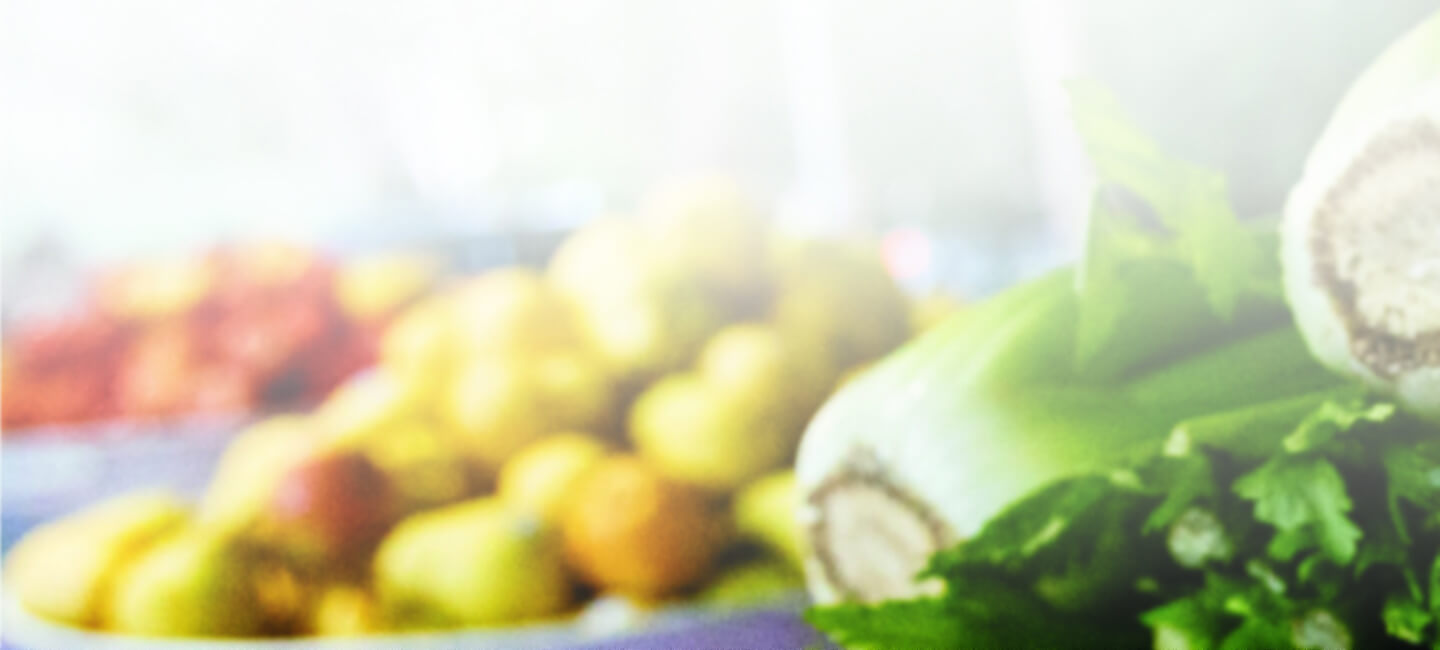
Annual Report 2022-2023
At my core, I believe that good food is not just sustenance. It is the keystone of thriving, resilient people and communities. It is transformative.
One year ago, the Food Bank began a transformation of our own: we embarked on the first leg of a three-year strategic roadmap to root into our values, deepen our partnerships and advocacy, and chart a course from the pandemic era towards a future of abundance. Reflecting on our journey’s first year, I’m incredibly heartened by our collective efforts – partners, participants, volunteers, donors and advocates – to make good, nutritious food accessible to all.
Together, we broadened food access by helping trusted partners open new neighborhood pantries and reopen those shuttered by the pandemic. We listened to partners and participants to better understand the challenges facing our community and how we can reduce barriers to food access. In coalition, we fiercely advocated to bolster critical safety net programs. Through it all, we shared fresh, seasonal produce and pantry staples with more than 55,000 households each week.
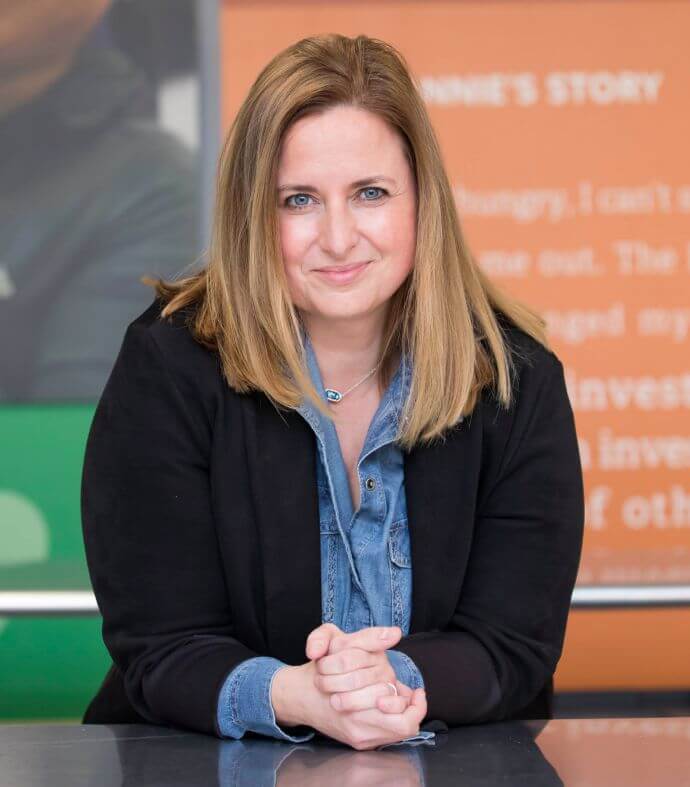
During the pandemic, we saw historic levels of need. Generous donors stepped up to provide critical resources, and I thank them for their dedicated support. But the need for good food remains historic and urgent. Pandemic-era supports that helped neighbors make ends meet and lowered poverty began rolling back in fiscal year 2023. The rising cost of necessities, from groceries to rent to utilities to childcare, added pressure on low-income families and forced difficult tradeoffs. And as inflation persisted and the safety net shrank, food insecurity increased by 30% in 2022 compared to the previous year*. Throughout fiscal year 2023, our neighbors continued to turn to the Food Bank to put food on the table.
Meeting this growing need as funding from all levels of government declined and food costs rose was a significant challenge last year, and something we continue to grapple with. As we look to the future, it will take deep, sustained community investment to bridge this gap.
As we enter year two of our strategic roadmap, we continue to pivot our services from the crisis response of the pandemic to a more sustainable approach. We are building off our community’s insights to find innovative, effective ways of working with partners. We are centering choice and dignity while piloting new service models that help neighbors get the food and the holistic support they need. And we are tenacious in our advocacy for upstream policy solutions that address both the consequences and root causes of hunger.
Our work is cut out for us. But I am energized by our shared vision for the future: a community where everyone has access to nutritious food of their choosing, is uplifted by a network of support, and all can thrive.
Together, I believe we can make this vision a reality and end hunger in San Francisco and Marin.

Tanis Crosby
Executive Director

*Household Food Security in the United States in 2022, USDA, October 2023.
Fiscal Year 2023

Fiscal Year 2024

Fiscal Year 2025
To end hunger, we cannot only manage the hunger we see today, but we must tackle its root causes. Together with our partners, participants and supporters we have embarked on a three-year strategic roadmap to reimagine how food insecurity is addressed.
Our first year was spent listening to and learning from our community to identify and accelerate solutions that work.
Our Partner Network
350
partnerships built
& strengthened
240
Neighborhood Food Pantries
click to view:
Pantries
Non-Pantry Partners
Pop-ups
Home-Delivered Groceries
Key
Low
High

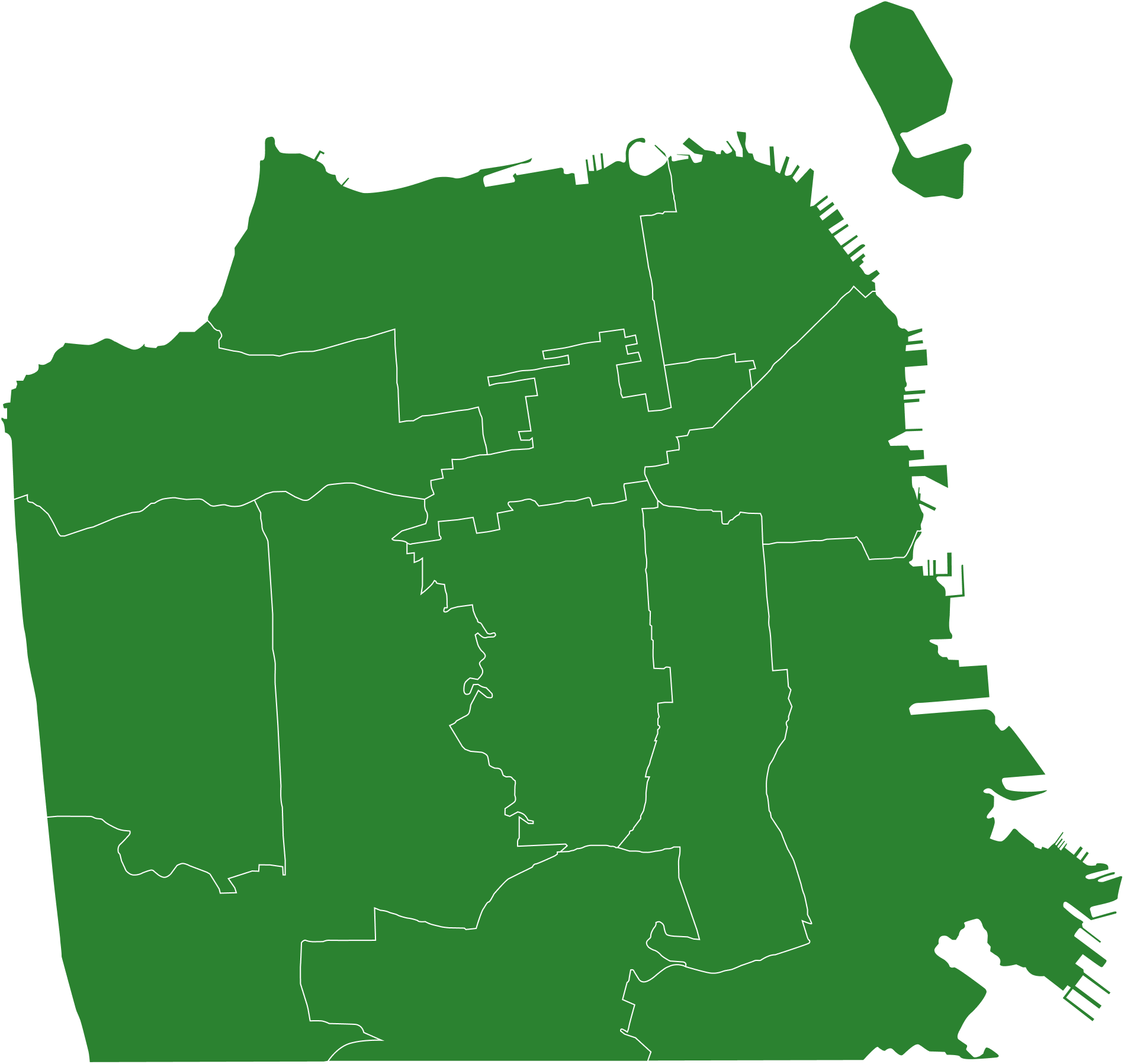



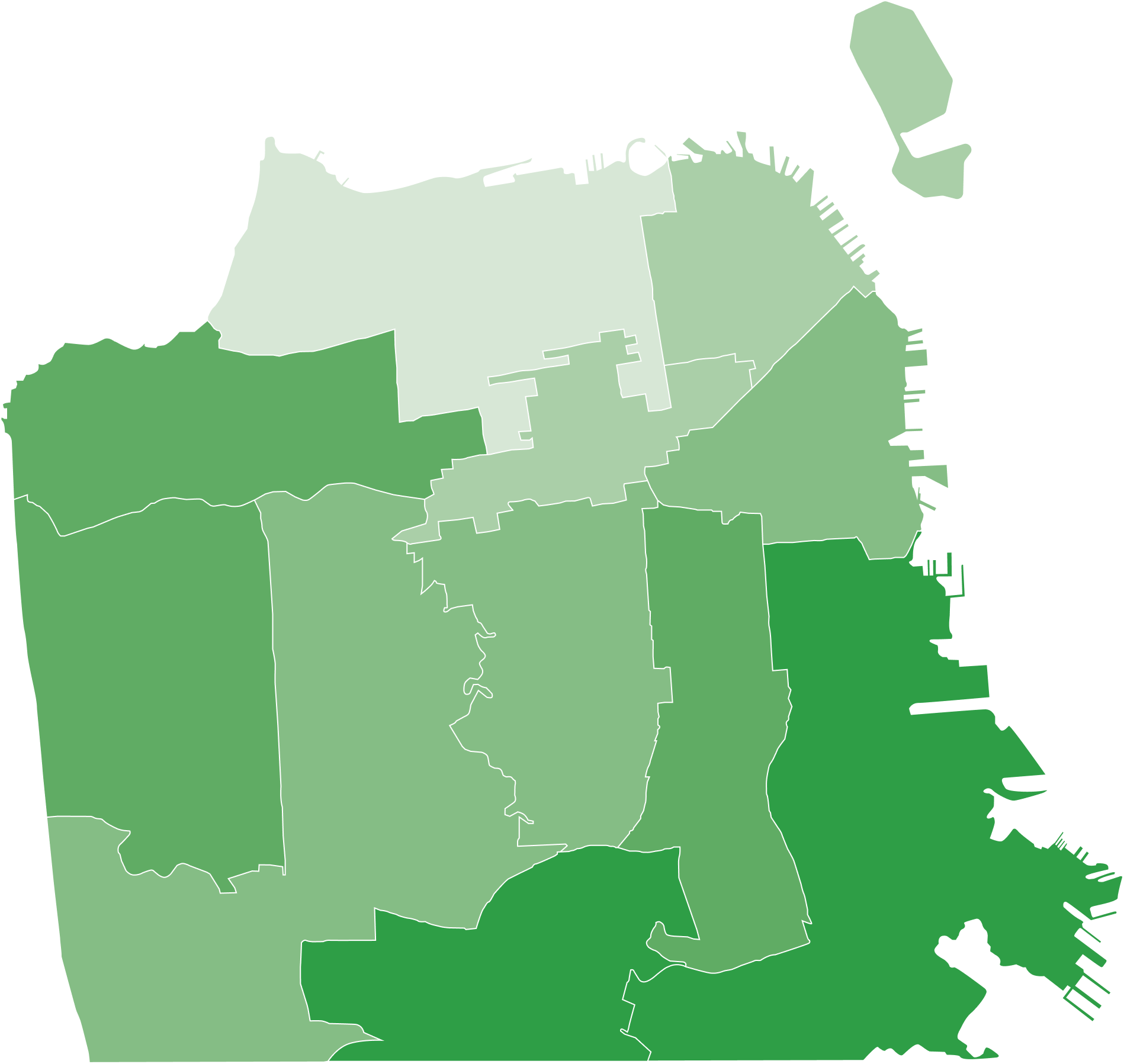
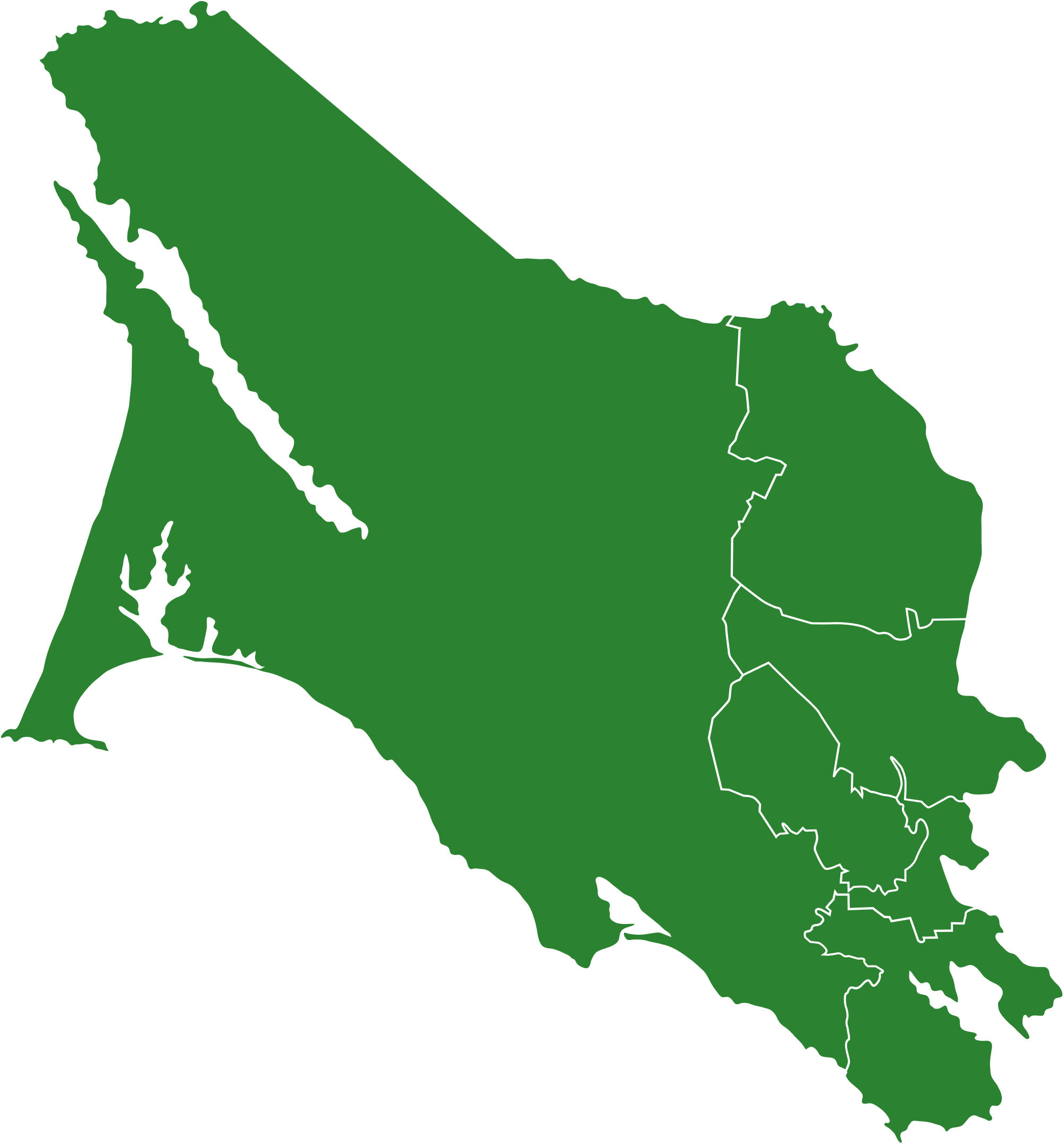



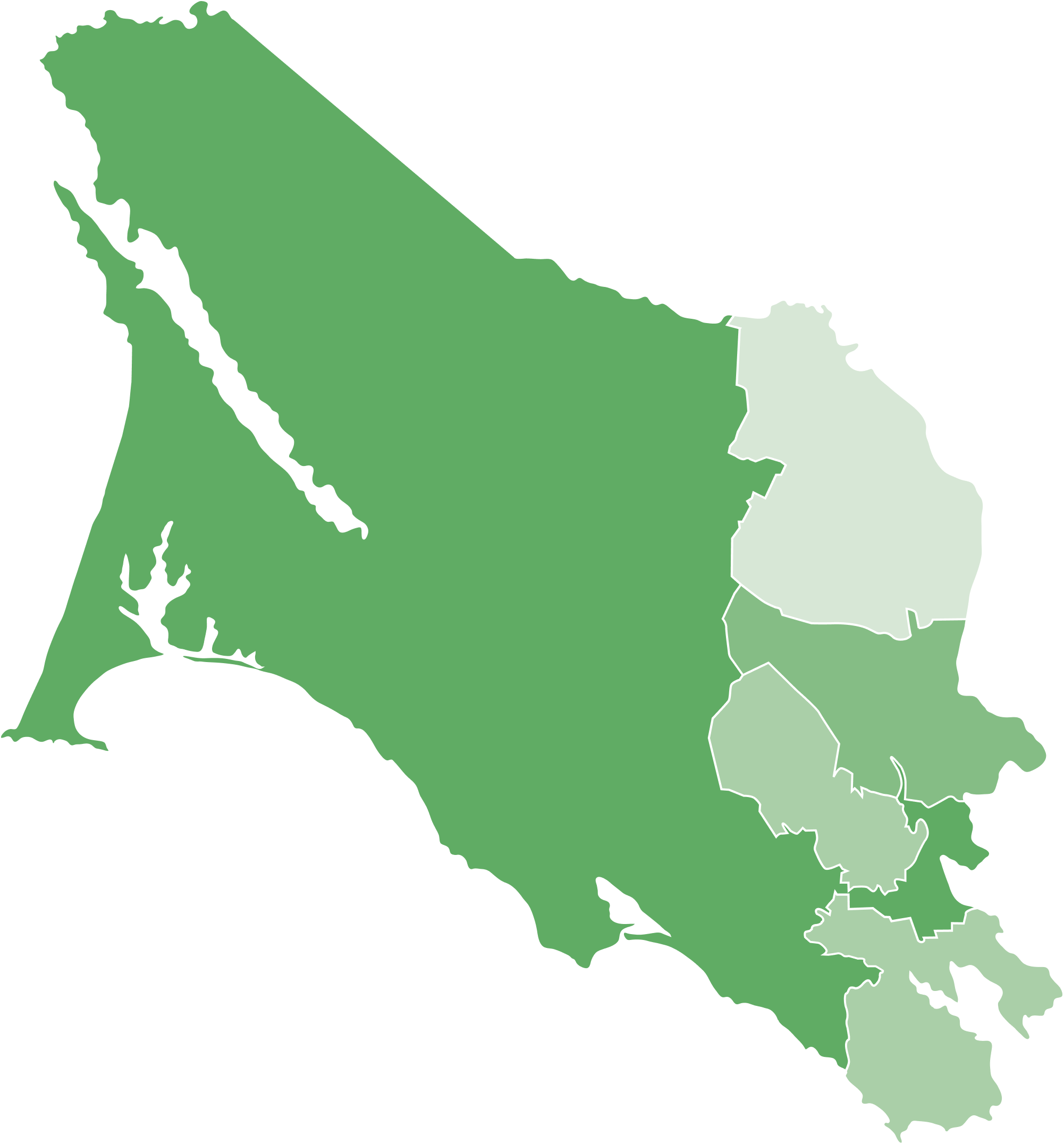
We helped our partners open and reopen 7 Neighborhood Food Pantries and expanded 77 food pantries.
Neighborhood Food Pantries opened or reopened this year after pandemic closures
“We really didn’t want to close, but we had to. Reopening has been great because we know all the people, and they remember us. I used to see people, and they would ask ‘when are you guys opening back up?’ It’s just really wonderful the way it’s all come together.”
Charlotte Elliott Pantry Coordinator, Christ for All Nations Lutheran ChurchTo strengthen our network of support, we wanted to better understand our partners’ challenges and how we can address them. Through partner surveys, focus groups and interviews we learned our community is facing challenges with stigma, language barriers and connecting participants to other services.
Neighborhood Food Pantries expanded
“Our community partners are critical to this work. Each community is unique, and we are able to learn how we can better support our partners who have deep ties to the neighborhoods and participants they serve. Listening, learning, and co-creating together is helping us serve communities better, while also developing new ways to address hunger.”
Tina Gonzales Director of Community Partnerships, San Francisco-Marin Food Bankof participants like the food they get from the Food Bank *
“My kids, they like fruit. That's something that I know they're going to eat no matter what kind of fruit it is. And the pantry helps out with fruits and vegetables. Instead of snacking on cookies and chips, let’s snack on fruit. That’s what the Food Bank provides – a healthier option.”
Krayla Food Bank Participant
of what participants choose
from is fresh produce
of participants say the food is
culturally appropriate *
of food pantries in our network
offered farmer’s market or
hybrid distributions
“My experience with the farmer’s market-style has been great – I like that it’s so organized. I know practically all the staff and volunteers, and I thank them for being out here. It’s good, healthy food they give out, and the fruits and vegetables are what my family eats daily.”
Marta Food Bank ParticipantThe Food Bank surveyed more than 9,000 of our participants to learn
about the challenges they are facing and how we can continue to support
them. We learned that a high cost of living, declining government safety
net programs like CalFresh (formerly food stamps), and structural inequities
are forcing participants to make impossible choices.
“I work seven days a week. If I want to take a day off, I can, but that means less money. I can barely cover my rent. Rent here is expensive, groceries are expensive these days. That’s why it’s great I can get beautiful produce from the Food Bank. It really helps alleviate the burden of inflation.”
Ming Food Bank Participant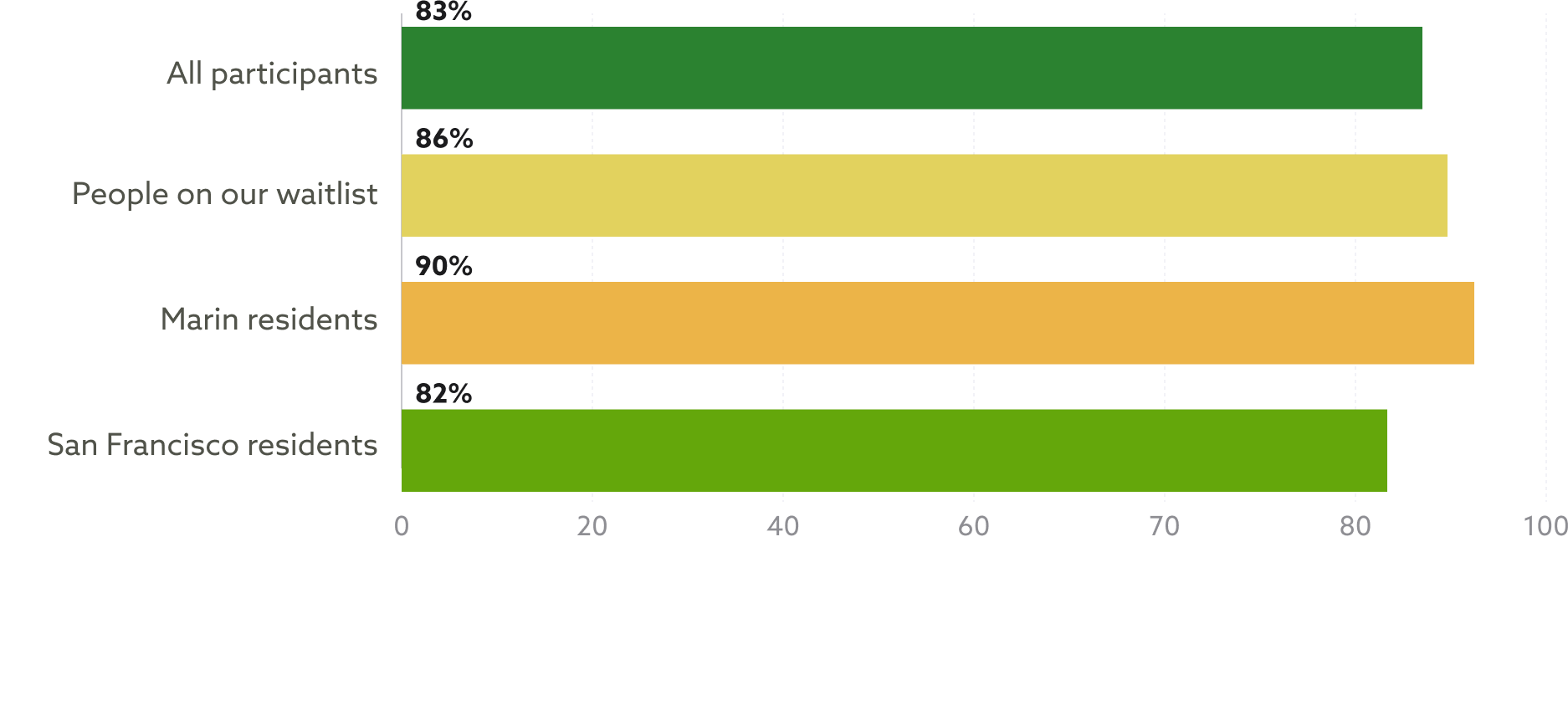
have someone working in
their household
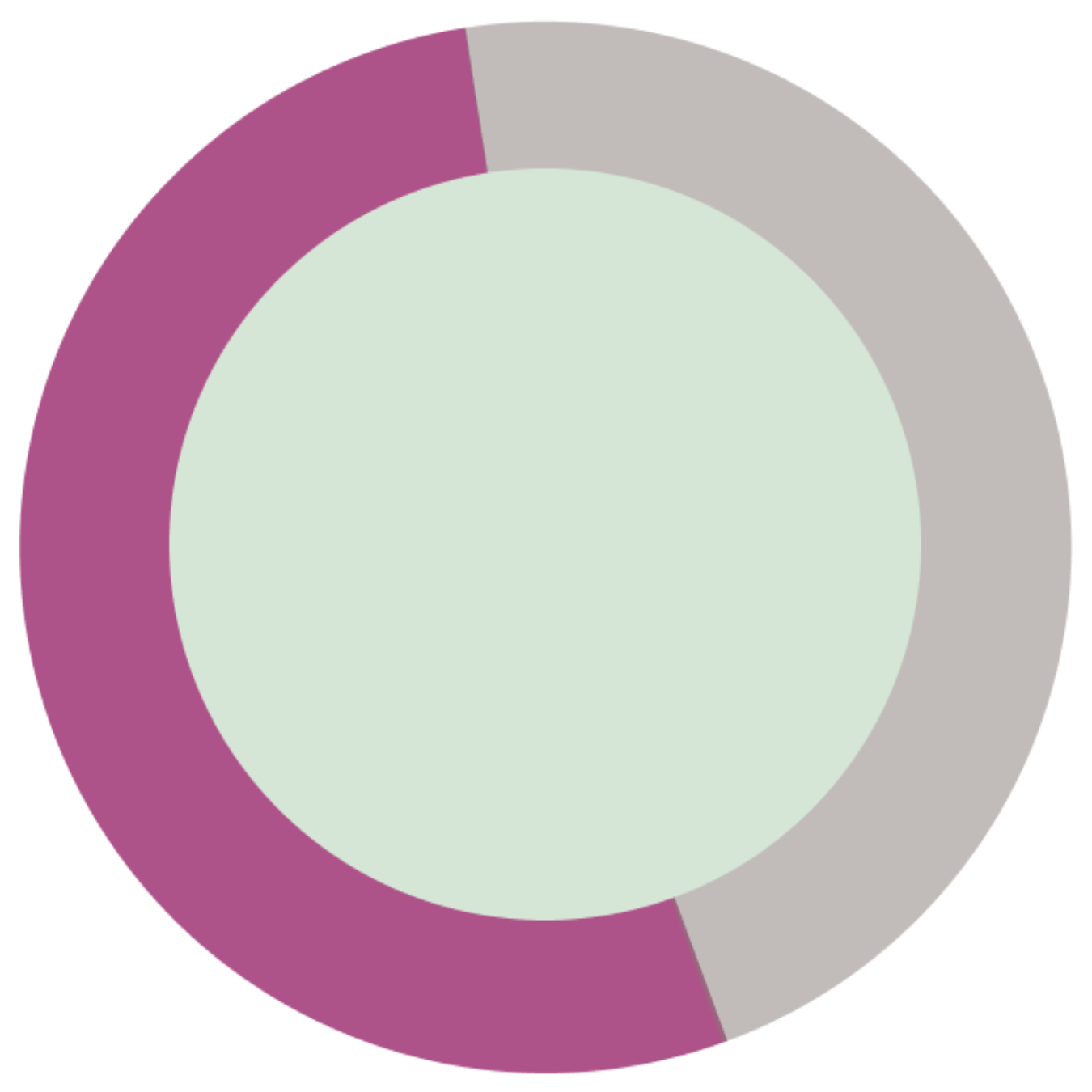
couldn't cover a $400
emergency expense
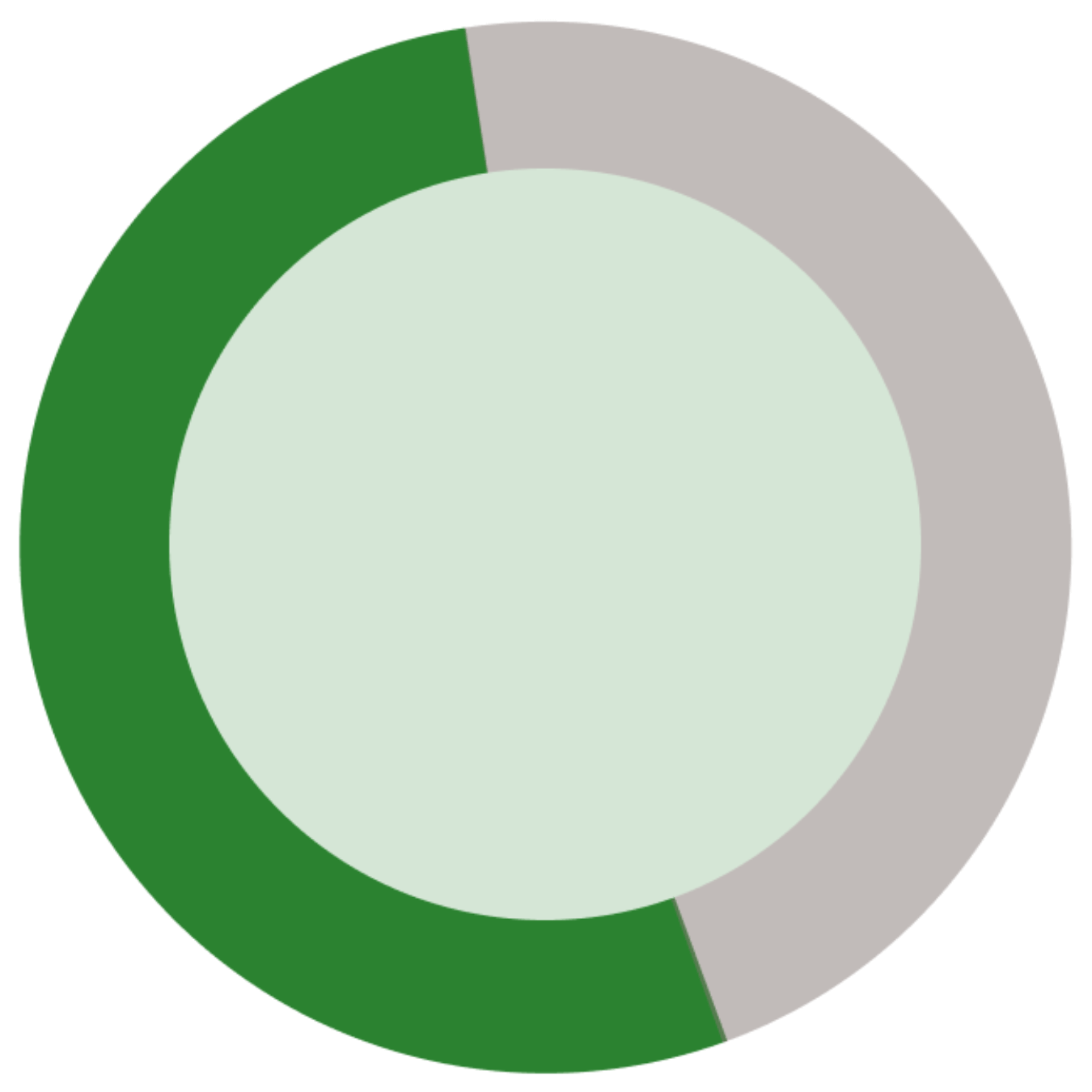
participants that worry less
thanks to the Food Bank
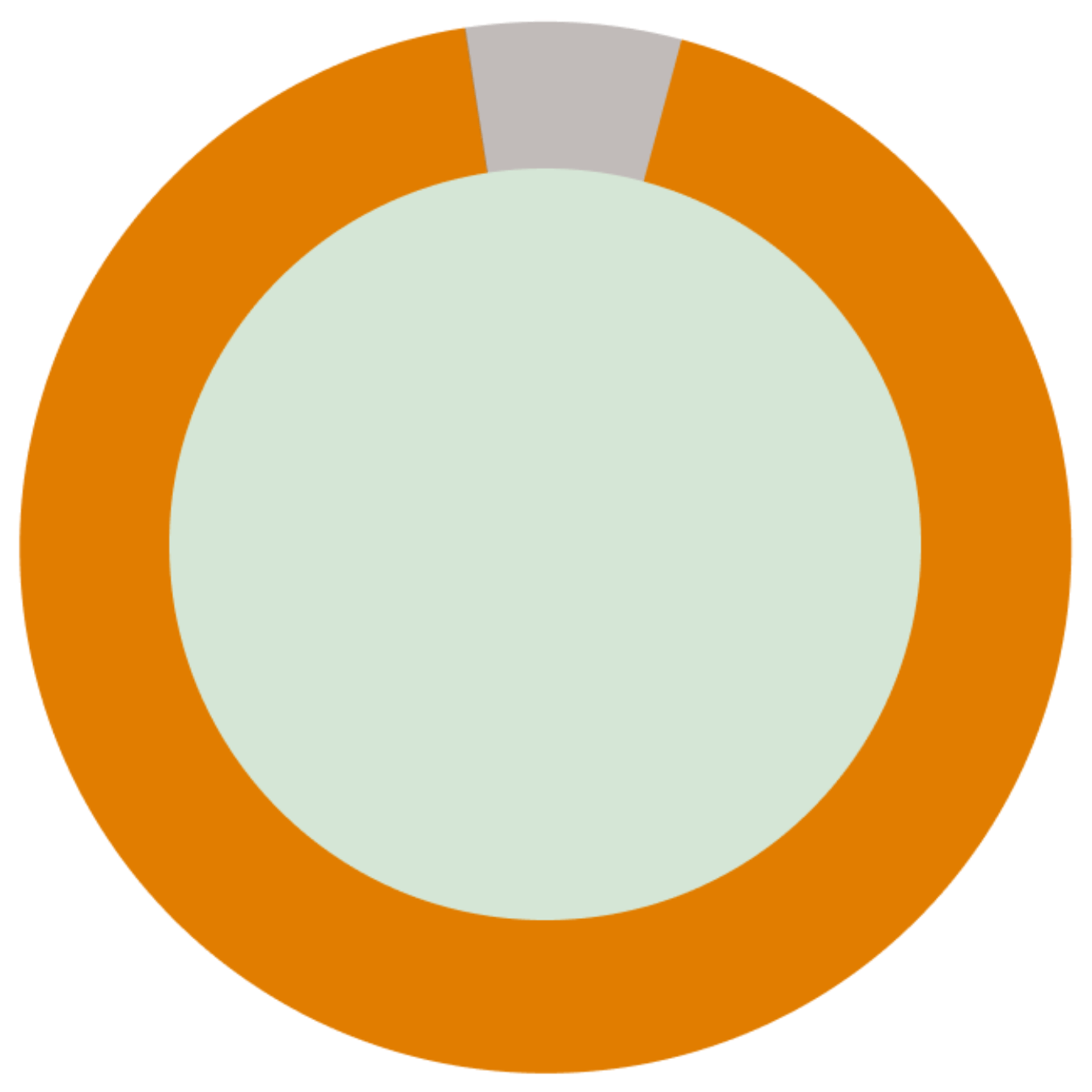
We know that poverty and structural inequities are the greatest drivers of food insecurity. We also know that CalFresh (formerly food stamps) is one of the most effective tools to address food insecurity. It ensures families have money to buy the groceries they need and prefer.
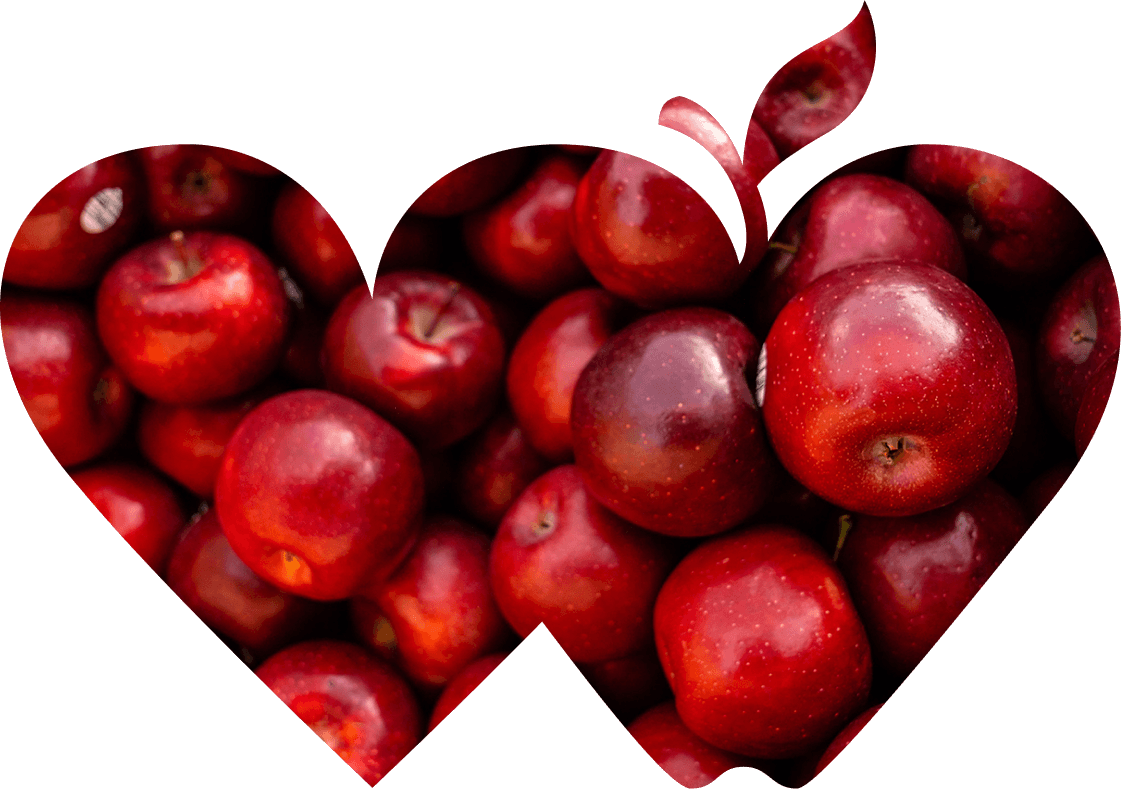
secured in benefits
people helped in applying for CalFresh
participants provided feedback about
barriers to accessing CalFresh
More than 20% of San Francisco and Marin residents who qualify for CalFresh are not signed up for the program.* That amounts to more than $55 million being left on the table. To find solutions to address this, we formed a coalition to engage our participants and partners in identifying and dismantling the barriers to accessing CalFresh.
*According to the most recent data released by the California Department of Social Services (CDSS).
of those not enrolled in CalFresh didn’t know they were eligible *
“What we heard from community members was authentic and honest. They shared the challenges they face in understanding how to access CalFresh and other benefits. The feedback is helping us take action with community partners to remove barriers and increase access to benefits that address food insecurity.”
Alexandra Danino Senior Program Manager, Outreach Network Support, San Francisco-Marin Food BankWith the end of pandemic-era CalFresh emergency allotments, many people are now receiving as little as $23 per month in benefits. In a community as expensive as ours, $23 per month doesn’t go far. Thanks to the advocacy of the California Association of Food Banks, End Child Poverty, Nourish California, Senator Menjivar, the Food Bank and more, California is piloting an increase in the minimum benefit to $50. This pilot is the first step toward making a statewide increase a reality.
“I have disability insurance and I get CalFresh. So, a great thing is they just increased it. Before it was $23 a month for me. And another great thing is at the farmer's market, if you spend money there, they match the amount. So, I spend $30 easily, and I got an additional $30 already! That's $60 I could spend [on food] for the month, which I'm very thankful for.”
Scott Food Bank Participantsupporters took action to help advance meaningful policy solutions
secured in continued CalFood funding for California Food Banks
secured to fully implement free school meals for all in California
Volunteers power our work. Last year volunteers worked 61,000 shifts
totaling 155,000 hours!
partners turned to us for support recruiting volunteers
“Volunteering regularly at the pantries has made me feel so much more immersed in the community. It's amazing how simple, everyday interactions with people who start off as strangers can quickly grow into such strong and deeply rooted connections…participants are not just another number, but people who have backgrounds, families, stories, and experiences that are parallel to my own. And the same goes for the community of regular volunteers that has evolved."
Stephanie Food Bank VolunteerAsian
66%
Hispanic/Latino
18%
White
9%
Black/African American
6%
Middle Eastern/North African
0.5%
Mixed Race
0.5%
Native Hawaiian/Pacific Islander
0.5%
Native American
0.3%
55,000 households served weekly
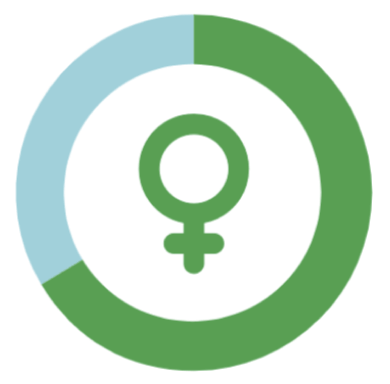
66% female
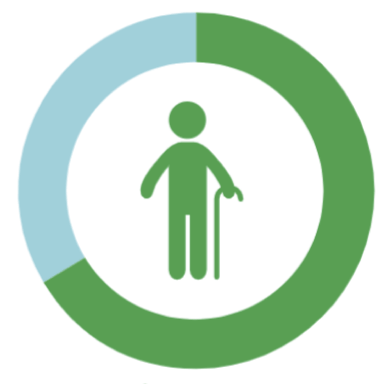
66% senior
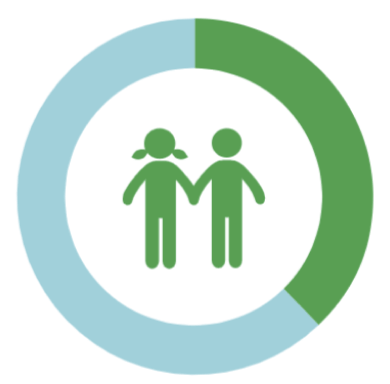
33% have children
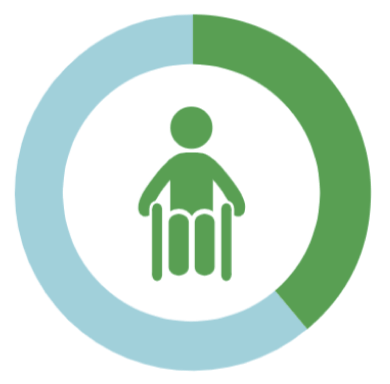
42% disability in household
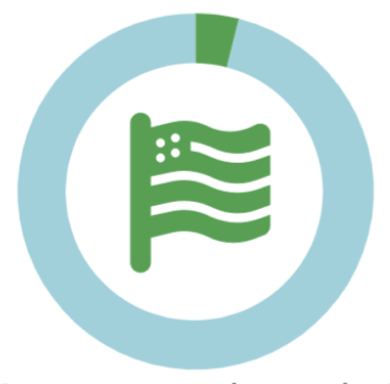
4% veteran in household

3% unhoused
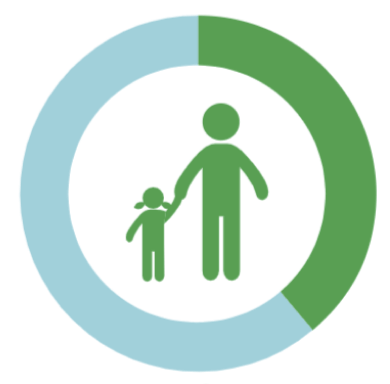
39% of those with children are single parents

72% first language other than English
Inclusive of households for whom we have demographic data.
We continue to prioritize technology, data analytics and reporting to better measure impact, understand the community’s needs and feedback, and ensure we are being as effective as possible to end hunger.
55000
Households received fresh, nutritious groceries weekly
350
community organizations make
up this network of support
70 %+
of the food participants
received was fresh produce
57 M
meals worth of food was
shared with the community
of participants worried less
about running out of food
thanks to the Food Bank
The Food Bank ended fiscal year 2023 in a sound financial position despite rising costs and declining private and public support. Thanks to the generosity of donors who supported us during and since the pandemic, we were able to serve record levels of people despite historic inflation coupled with a rollback of government support.
Knowing crisis response funding was likely temporary while the need likely wasn’t, the Food Bank Board of Directors proactively established a multi-year $30 million emergency response reserve fund to extend the impact of that money. The goal was to ensure the Food Bank could serve as many people as possible for as long as possible and weather the anticipated decreases in pandemic-era support and an unpredictable economy.
In our financial summary on the accompanying page, you will see that the Food Bank experienced a deficit of $2.7 million in fiscal year 2023. This was a result of the decline in financial support coupled with increased operating expenses due mainly to rising food prices, a sharp decline in USDA support that forced us to buy more food, continually high levels of service, and an increase in personnel costs in response to changing market conditions. The financial deficit was strategically covered by the emergency reserve fund as part of a three-year planned spending of these resources.
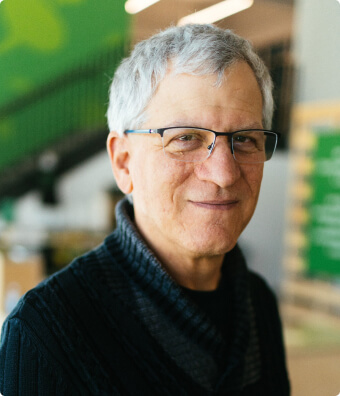
In line with our three-year organizational strategic plan, our three-year financial plan includes spending down the emergency reserve while moving towards achieving a sustainable balanced operating budget by fiscal year 2026. To achieve this goal, we plan to decrease expenses, invest in the acceleration of new solutions to end hunger, and recommit to more cost-effective solutions we know work. We are also focused on ensuring we have the resources necessary through private donations to offset decreased revenue from government sources.
As the largest nonprofit food provider in San Francisco and Marin, hundreds of other organizations and tens of thousands of individuals are counting on us – and we are committed to doing everything we can to be there for them. We are grateful to each and every donor who continues to make this possible.
The next page presents a snapshot of our financials. Complete audited financial statements are online at sfmfoodbank.org/financials or by request.

Michael Braude
Chief Financial Officer

Financial Statement
Funding Breakdown
Revenue
Donated Food and In-Kind Contributions
$ 93,700,070
Government Food Commodities
$ 15,307,426
Government Grants
$ 18,035,444
Private Contributions Including Events
$ 39,289,523
Other Revenue
$ 2,241,616
Total Revenue*
$ 168,574,079
*The value of donated food is included in the dollar breakdown but not the percentage breakdown
Expenses
Program Services
$ 159,672,897
Management and General
$ 4,475,159
Fundraising
$ 7,169,791
Total Expenses
$ 171,317,847
Total Net Assets
$ 112,681,923
Board of Directors
Fiscal Year 2022-2023
Çigdem Gencer, Chair
Executive Coach & Founder
Fazilet Consulting
Jonathan Walker, PhD, Vice Chair
Managing Director
Secretariat Economists LLC
Jessica Berg
Co-Founder & Principal
BergDavis Public Affairs
Noelle Bonner
CEO
Bonner Communications
Scott Brubaker
CFO
GlobalLogic Inc.
Dianna Cavagnaro
Founder & CEO of Hesper
Founder & CEO of Z’est La Vie
Jennifer Chang
Senior Director of Program
Management, Zendesk
Pepe Gonzalez
Principal
Laurel Dell
Short Elementary Schools
Randy Gottfried
Finance Consultant
Ansaf Kareem
Partner
Lightspeed Venture Partners
Horace L. Montgomery Jr.
Interim Associate Executive Director of Programs
Associated Students at San Francisco State University
Rabbi Stephen S. Pearce, PhD
Congregation Emanu-El
San Francisco
Nadia Rahman
Principal
Rahman Consulting
Barbara Rosston
Nonprofit &
Educational Consultant
Beth Roy Jenkyn
Pro-Bono Nonprofit Consultant
Community Volunteer
Joseph Sáenz, PhD
Managing Director
Fremont Group
Jeff Schoppert
Retired Lawyer
Elliot Schrage
Business and Human Rights
Hilary Seligman, MD
Professor of Medicine
UCSF
Tara Seracka
Senior Vice President, Legal & Deputy General Counsel
Cisco Systems
Linda Shiue, MD
Director of Culinary Medicine
Kaiser Permanente SF
Uma Sinha, PhD
Chief Scientific Officer
BridgeBio Pharma
Judy Young
Executive Director
Southeast Asian Development Center
ONTO
2024
Get Food Bank Updates
Privacy & Cookies: This site uses cookies. By continuing to use this website, you agree to their use. To find out more, including how to control cookies, see our Privacy Policy here.
